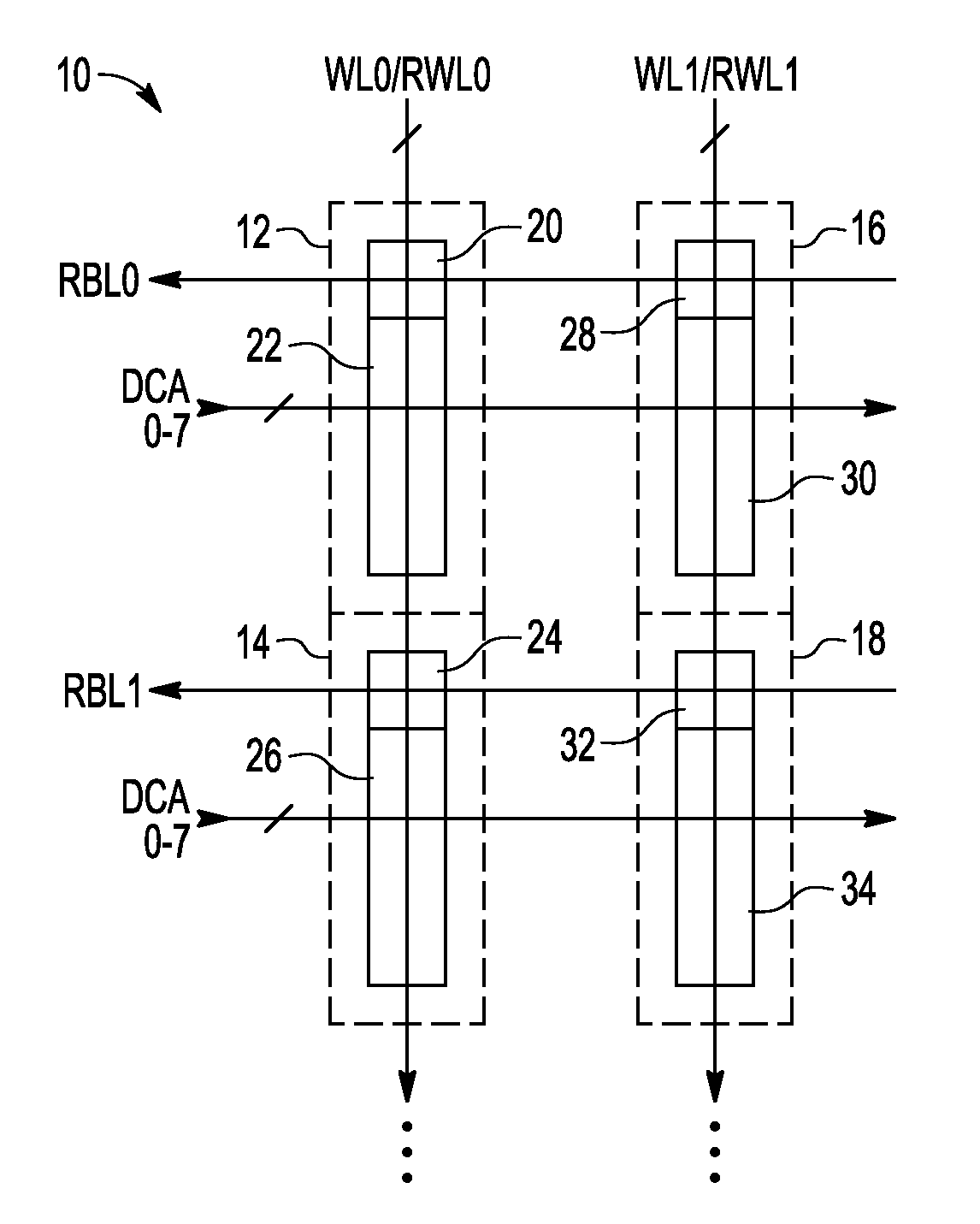Non-volatile static random access memory (NVSRAM) having a shared port
a random access memory and non-volatile technology, applied in static storage, digital storage, instruments, etc., can solve problems such as the speed of reading, obtaining access speeds,
- Summary
- Abstract
- Description
- Claims
- Application Information
AI Technical Summary
Benefits of technology
Problems solved by technology
Method used
Image
Examples
Embodiment Construction
[0014]In one aspect, a shared port block has a plurality, for example 8, of bit cells that share a partial sense amplifier and write driver so as to reduce delays in reading as well as writing which is particularly effective for NVSRAMs that use a programmable resistance. This is better understood by reference to the drawings and the following written description.
[0015]Shown in FIG. 1 is a NVSRAM 10 having a shared port block 12, a shared port block 14, a shared port block16, a shared port block 18, a read bit line RBL0 coupled to shared port blocks 12 and 16, a read bit line RBL1 coupled to share port blocks 14 and 18, decoded column address DCA signal lines 0-7 coupled to shared port blocks 12, 14, 16, and 18, a word line WLO coupled to shared port blocks 12 and 14, and a word line WL1 coupled to shared port blocks 16 and 18. A variation can be that not all of the shared port blocks on a given word line receive the same DCA signals. Shared port blocks 12, 14, 16, and 18 each have ...
PUM
 Login to View More
Login to View More Abstract
Description
Claims
Application Information
 Login to View More
Login to View More - R&D
- Intellectual Property
- Life Sciences
- Materials
- Tech Scout
- Unparalleled Data Quality
- Higher Quality Content
- 60% Fewer Hallucinations
Browse by: Latest US Patents, China's latest patents, Technical Efficacy Thesaurus, Application Domain, Technology Topic, Popular Technical Reports.
© 2025 PatSnap. All rights reserved.Legal|Privacy policy|Modern Slavery Act Transparency Statement|Sitemap|About US| Contact US: help@patsnap.com



